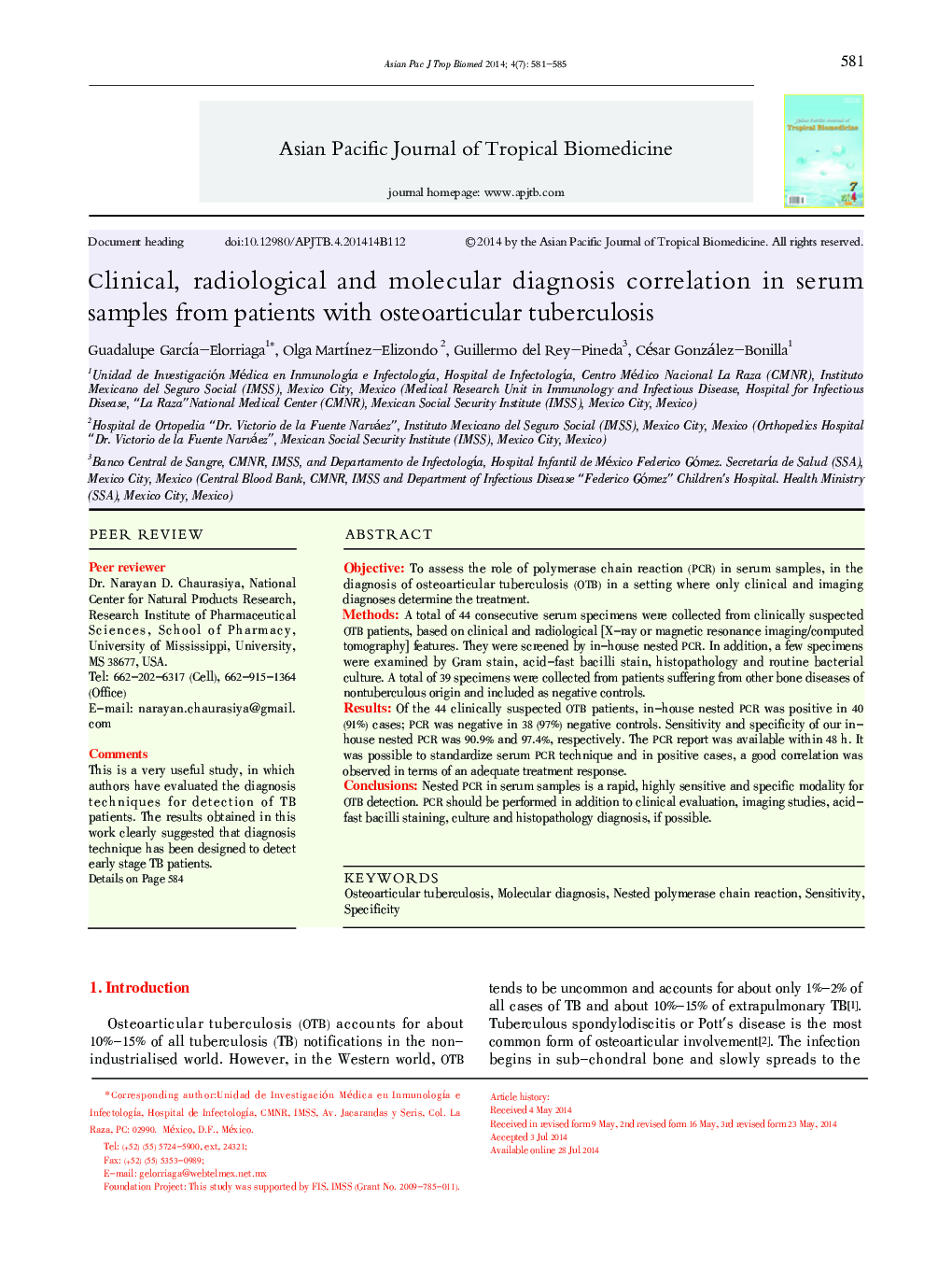| Article ID | Journal | Published Year | Pages | File Type |
|---|---|---|---|---|
| 2032572 | Asian Pacific Journal of Tropical Biomedicine | 2014 | 5 Pages |
ABSTRACTObjectiveTo assess the role of polymerase chain reaction (PCR) in serum samples, in the diagnosis of osteoarticular tuberculosis (OTB) in a setting where only clinical and imaging diagnoses determine the treatment.MethodsA total of 44 consecutive serum specimens were collected from clinically suspected OTB patients, based on clinical and radiological [X-ray or magnetic resonance imaging/computed tomography] features. They were screened by in-house nested PCR. In addition, a few specimens were examined by Gram stain, acid-fast bacilli stain, histopathology and routine bacterial culture. A total of 39 specimens were collected from patients suffering from other bone diseases of nontuberculous origin and included as negative controls.ResultsOf the 44 clinically suspected OTB patients, in-house nested PCR was positive in 40 (91%) cases; PCR was negative in 38 (97%) negative controls. Sensitivity and specificity of our in-house nested PCR was 90.9% and 97.4%, respectively. The PCR report was available within 48 h. It was possible to standardize serum PCR technique and in positive cases, a good correlation was observed in terms of an adequate treatment response.ConclusionsNested PCR in serum samples is a rapid, highly sensitive and specific modality for OTB detection. PCR should be performed in addition to clinical evaluation, imaging studies, acid-fast bacilli staining, culture and histopathology diagnosis, if possible.
